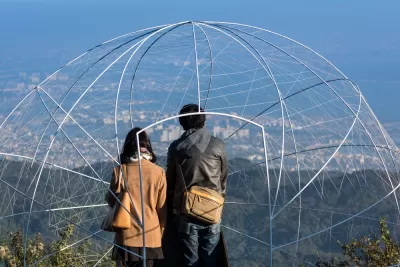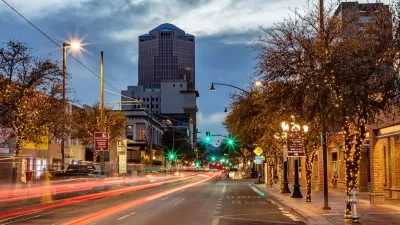Decades ago, Walter Benjamin theorized that pretty much everything could be reproduced—and, therefore, nothing was unique. This dismal conclusion, however true it may be, ignores the uniqueness of landscape.

"Even in the 1930s, it wasn’t hard to imagine that the same mechanical processes that were producing cars and phones and chemicals could be trained to produce art as well. Or, rather, reproduce it. Benjamin does not discount the importance of the artist in the creation of original work. But he implies that human mastery of chemistry and materials science, paired with the precision of the assembly line, could essentially produce copies indistinguishable from their originals and do so in limitless numbers."
"What struck me then as I strolled those expectant streets (possibly in ways that the residents never will) was that, for all the sameness of the homes, each one retained an essential uniqueness. Those developments, like most such developments, offered a few designs, each with lame, disembodied names like 'The Nantucket' or whatever. They weren’t so much designs as they were collections of amenities and necessities united under roofs. And yet, each occupied its own special, if not necessarily distinctive, plot of desert."
"That’s why I take solace in special places and un-special places alike. And it’s why I put a degree of faith in architecture, even when so many other human endeavors have slid into banality and self-reference. Of course, not every architect can, or should, be another Utzon or Meier. The world will always need far more workaday structures than it does masterpieces. The more we must strain to see our auras amid the banality of postmodern life, the more we may need to tighten our grip on the incredible places humanity has created."
FULL STORY: The Work of Architecture in the Age of Mechanical Reproduction

Alabama: Trump Terminates Settlements for Black Communities Harmed By Raw Sewage
Trump deemed the landmark civil rights agreement “illegal DEI and environmental justice policy.”

Study: Maui’s Plan to Convert Vacation Rentals to Long-Term Housing Could Cause Nearly $1 Billion Economic Loss
The plan would reduce visitor accommodation by 25% resulting in 1,900 jobs lost.

Why Should We Subsidize Public Transportation?
Many public transit agencies face financial stress due to rising costs, declining fare revenue, and declining subsidies. Transit advocates must provide a strong business case for increasing public transit funding.

Paris Bike Boom Leads to Steep Drop in Air Pollution
The French city’s air quality has improved dramatically in the past 20 years, coinciding with a growth in cycling.

Why Housing Costs More to Build in California Than in Texas
Hard costs like labor and materials combined with ‘soft’ costs such as permitting make building in the San Francisco Bay Area almost three times as costly as in Texas cities.

San Diego County Sees a Rise in Urban Coyotes
San Diego County experiences a rise in urban coyotes, as sightings become prevalent throughout its urban neighbourhoods and surrounding areas.
Urban Design for Planners 1: Software Tools
This six-course series explores essential urban design concepts using open source software and equips planners with the tools they need to participate fully in the urban design process.
Planning for Universal Design
Learn the tools for implementing Universal Design in planning regulations.
Smith Gee Studio
Alamo Area Metropolitan Planning Organization
City of Santa Clarita
Institute for Housing and Urban Development Studies (IHS)
City of Grandview
Harvard GSD Executive Education
Toledo-Lucas County Plan Commissions
Salt Lake City
NYU Wagner Graduate School of Public Service





























